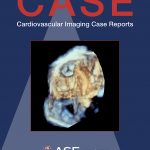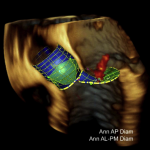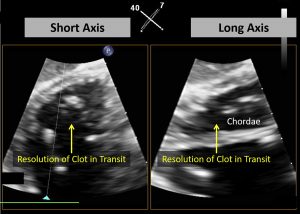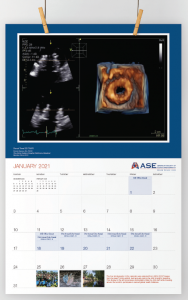 Congratulations to Shiecca C. Madzima, MD, Christina A. Snider, BA, Haris Riaz, MD, and Rohit Moudgil, MD, PhD, from the Section of Clinical Cardiology, Department of Cardiovascular Medicine, Heart and Vascular Institute, Cleveland Clinic Foundation, Cleveland, Ohio for supplying the image and text for the latest CASE, What is This Image? quiz. Are you able to get it right?
Congratulations to Shiecca C. Madzima, MD, Christina A. Snider, BA, Haris Riaz, MD, and Rohit Moudgil, MD, PhD, from the Section of Clinical Cardiology, Department of Cardiovascular Medicine, Heart and Vascular Institute, Cleveland Clinic Foundation, Cleveland, Ohio for supplying the image and text for the latest CASE, What is This Image? quiz. Are you able to get it right?
What is This Image? Quiz
New U.S. CPT codes for COVID-19
On September 8, the AMA CPT Editorial Panel published an update to the Current Procedural Terminology (CPT®) code set that includes two code additions for reporting medical services sparked by the public health response to the COVID-19 pandemic
The first code, CPT code 99072, was approved in response to sweeping measures adopted by medical practices and health care organizations to stem the spread of the novel coronavirus (SARS-CoV-2), while safely providing patients with access to high-quality care during in-person interactions with health care professionals. The additional supplies, materials and clinical staff time identified in this code are for items intended to mitigate the transmission of the respiratory disease for which the PHE was declared. The new code is to be reported only once per in-person patient encounter per day regardless of the number of services rendered at that encounter, allowing for the provision of extra precautions to ensure the safety of patients as well as health care professionals.
The second addition, CPT code 86413, was approved in response to the development of laboratory tests that provide quantitative measurements of SARS-CoV-2 antibodies, as opposed to a qualitative assessment (positive/negative) of SAR-CoV-2 antibodies provided by laboratory tests reported by other CPT codes. By measuring antibodies to SARS-CoV-2, the tests reported by 86413 can investigate a person’s adaptive immune response to the virus and help access the effectiveness of treatments used against the infection.
For quick reference, the two new Category I CPT codes and long descriptors are:
- 99072: Additional supplies, materials, and clinical staff time over and above those usually included in an office visit or other non-facility service(s), when performed during a Public Health Emergency as defined by law, due to respiratory-transmitted infectious disease.
- 86413: Severe acute respiratory syndrome coronavirus 2 (SARS-CoV-2) (Coronavirus disease [COVID-19]) antibody, quantitative
Please note CMS (or other payers) have not indicated they will cover these codes. ASE will monitor this very closely and update you on any developments
Science from Down Under in the September JASE!
 The September JASE contains “Poor Survival with Impaired Valvular Hemodynamics After Aortic Valve Replacement: The National Echo Database Australia Study,” by David Playford, MBBS, PhD, FCSANZ, FESC, FACC, et al. Dr. Playford said, “We have coined a new term in relation to obstruction of flow across valve replacements: “Impaired Valvular Hemodynamics” or IVH. We believe it best addresses the combined issue of abnormal gradients, reduced orifice area, and patient-prosthesis mismatch.The National Echo Database of Australia is the world’s largest repository of echocardiographic measurement and report data that is linked with all-cause and disease-specific mortality. Using NEDA, we characterised the valvular hemodynamics in patients with AVR and classified them by the degree of IVH.” Two additional articles on echo in valvular heart diseases join this one for a deep dive on the topic.
The September JASE contains “Poor Survival with Impaired Valvular Hemodynamics After Aortic Valve Replacement: The National Echo Database Australia Study,” by David Playford, MBBS, PhD, FCSANZ, FESC, FACC, et al. Dr. Playford said, “We have coined a new term in relation to obstruction of flow across valve replacements: “Impaired Valvular Hemodynamics” or IVH. We believe it best addresses the combined issue of abnormal gradients, reduced orifice area, and patient-prosthesis mismatch.The National Echo Database of Australia is the world’s largest repository of echocardiographic measurement and report data that is linked with all-cause and disease-specific mortality. Using NEDA, we characterised the valvular hemodynamics in patients with AVR and classified them by the degree of IVH.” Two additional articles on echo in valvular heart diseases join this one for a deep dive on the topic.
This issue also includes a state-of-the-art review, “Artificial Intelligence and Echocardiography: A Primer for Cardiac Sonographers,” from Ashlee Davis, BS, ACS, RDCS, FASE, et al. Ms. Davis said, “With this article, we really wanted to address artificial intelligence (AI) from the sonographer’s perspective. Our goal was to ensure that sonographers have an understanding of the current and future uses of AI in echo, and address any concerns or fears that they may have about the impact on the profession.”
Other clinical investigations cover stress echo, hypertrophic cardiomyopathy and contrast echo, how to identify cardiovascular risk in systemic lupus erythematosus, echo assessment of myocardial scar, echo in children, and fetal echo. Three brief research communications finish out this month’s scientific knowledge. To read about a man whose life exemplified passion for echo and science, do not miss JASE Editor-in-Chief Michael H. Picard’s piece, “In Memoriam: Alfred F. Parisi, MD, FASE.”
Other features this month include:
- The President’s Message from Judy Hung, MD, FASE
- The Sonographer’s Communication from Sharon Mulvagh, MD, FASE et al, A Survey of CEUS Education in Sonographer Training Programs: The Well-Opacified and Delineated Road Less Travelled, and Ready to Be Taken
- The Education calendar highlighting extraordinary opportunities around the world to increase your expertise and add to the field.
- The Council on Pediatric and Congenital Heart Disease Communication by Piers Barker, MD, FASE
JASE always welcomes input from our readers as we strive to provide top-notch research and communication for our dynamic field. Email managing editor, Deborah Meyer, at DMeyer@ASEcho.org.
August GEM
 During the month of August, one ASE member, Cassady Palmer, BS, ACS, RDCS, RDMS, FASE, was recognized for Going the Extra Mile and received a GEM award!z
During the month of August, one ASE member, Cassady Palmer, BS, ACS, RDCS, RDMS, FASE, was recognized for Going the Extra Mile and received a GEM award!z
Her nominator said, “Cassady has made some tremendous strides in the name of research for our lab. Cassady and our Medical Director, Dr Mazur, have secured a large research grant that will support and propel their work for years to come. Needless to say, we are very proud.”
Do you know an ASE member who’s gone the extra mile? Join us in celebrating ASE members who are making the world a better place, be it for their dedication to the field of cardiovascular ultrasound, being an outstanding mentor to students or fellows, their commitment to quality patient care, a milestone service anniversary, or congratulating them on a major accomplishment. Learn more about how to nominate someone here.
LIVE WEBINAR: Assessment of Carotid Arterial Plaque by Ultrasound for the Characterization of Atherosclerosis and Evaluation of Cardiovascular Risk
Join Guideline Chair, Amer M. Johri, MD, FASE, and Henrik Sillesen, MD, DMSc, for a free, LIVE webinar, Tuesday, September 22, 1:00 – 2:00 PM EDT, as they review the recently published ASE guideline, Recommendations for the Assessment of Carotid Arterial Plaque by Ultrasound for the Characterization of Atherosclerosis and Evaluation of Cardiovascular Risk. They will discuss the advantages and disadvantages of two-dimensional (2D) and three-dimensional (3D) ultrasound methods for carotid arterial plaque quantification.
- To register, login to your ASE member portal.
- Select the ASE Learning Hub from the top red menu.
- Register for the webinar here.
By the end of this educational webinar, viewers will be able to:
- Understand the standard method for carotid arterial plaque quantification recommended by ASE using 2-D or 3-D derived plaque height.
- Become familiar with other methods of arterial plaque measurement such as plaque score, plaque area, and plaque volume, including their advantages and disadvantages.
- Understand the clinical context within which carotid arterial plaque quantification enhances cardiovascular risk stratification.
- Become familiar with emerging techniques for carotid arterial plaque composition assessment and its role in detecting the vulnerable patient.

The Pandemic Appears in August CASE
 The latest issue of CASE, ASE’s online case reports journal, is available and contains, “Clot in Transit on Transesophageal Echocardiography in a Prone Patient with COVID-19 Acute Respiratory Distress Syndrome,” by James M. Horowitz, MD, Eugene Yuriditsky, MD, Ian J. Henderson, MD, Maxine Wallis Stachel, MD, Benjamin Kwok, MD, and Muhamed Saric, MD, PhD, FASE. Lead author Dr. Horowitz said, “Thrombotic events are common among patients with COVID-19. A high index of suspicion for pulmonary embolism should be maintained among patients with respiratory or hemodynamic decompensation. We reported a clot-in-transit in such a case using transesophageal echocardiography allowing for immediate bedside diagnosis with the patient maintained in prone position.”
The latest issue of CASE, ASE’s online case reports journal, is available and contains, “Clot in Transit on Transesophageal Echocardiography in a Prone Patient with COVID-19 Acute Respiratory Distress Syndrome,” by James M. Horowitz, MD, Eugene Yuriditsky, MD, Ian J. Henderson, MD, Maxine Wallis Stachel, MD, Benjamin Kwok, MD, and Muhamed Saric, MD, PhD, FASE. Lead author Dr. Horowitz said, “Thrombotic events are common among patients with COVID-19. A high index of suspicion for pulmonary embolism should be maintained among patients with respiratory or hemodynamic decompensation. We reported a clot-in-transit in such a case using transesophageal echocardiography allowing for immediate bedside diagnosis with the patient maintained in prone position.”
Takotsubo cardiomyopathies, rheumatic heart disease, transesophageal surgical situations, anatomic anomalies, masses, myxomas, thrombus, and interventional image guidance (both in human and animal patients) are other topics explored. One of the interventional image guidance cases looks at the novel use of echo fusion and cardiac computed tomographic imaging guidance for percutaneous paravalvular leak closure and comes from Lucy M. Safi, DO, FASE, FACC, et al.
CASE is a valuable tool for mentors, educators, and sonographers to utilize while elevating everyone’s detective abilities. CASE co-Editors-in-Chief, L. Leonardo Rodriguez, MD, FASE, and Karen G. Zimmerman, BS, ACS, RDCS, RVT, FASE, are very grateful to the all the authors and reviewers who have dedicated their time and effort to helping CASE continue its mission of publishing high-quality educational content. “We hope that the CASE community remains safe and engaged as we move forward in uncharted waters.”
CASE always wants to hear from readers and potential authors with opinions and questions. Don’t hesitate to email managing editor, Deborah Meyer at DMeyer@ASEcho.org.
Vote for Your Favorite Echo Images
 Thank you to everyone who submitted images for the ASE 2021 Image Calendar Competition. Now it is time to vote for your favorite images to be featured in a colorful, 12-month calendar that will be sent to all members who renew by December 31, 2020. Help your friends and colleagues win by voting today.
Thank you to everyone who submitted images for the ASE 2021 Image Calendar Competition. Now it is time to vote for your favorite images to be featured in a colorful, 12-month calendar that will be sent to all members who renew by December 31, 2020. Help your friends and colleagues win by voting today.
To vote for your favorite echo images:
- Login to Connect@ASE.
- Browse the images uploaded in the ASE 2021 Calendar Contest Image Library.
- Click each image to view.
- Give the “thumbs up” to as many images as you would like. The thumbs up button is located below the title of the image and author.
Each thumbs up counts as one vote. If you have any questions, please contact ASE at ACooper@ASEcho.org. Your input helps to create a beautiful and interesting 2021 image calendar
WASE STUDY REPORTS FINDINGS RELATED TO RIGHT ATRIAL SIZE BETWEEN NON-ASIAN AND ASIAN SUBJECTS
Durham, NC, August 8, 2020 – The World Alliance of Societies of Echocardiography (WASE) Normal Values Study is a cross-sectional study designed to obtain universal global reference ranges for both 2D and 3D echocardiographic (2DE, 3DE) data to identify geographical differences in echocardiographic measurements. Launched in 2016, the WASE study prospectively enrolled healthy individuals free from cardiac, lung, and kidney disease from 19 centers in 15 countries.
A new research study, using the data collected in the WASE study, examined the 2DE images and 3DE full-volume datasets obtained in a total of 1026 adults (351 non-Asian and 675 Asian), analyzed offline in two Core Labs. First author on the research, Laurie Soulat-Dufour, said of the findings, “Currently there is a paucity of data on 2D and 3D right atrial dimensions in the literature. Our results suggest that normal reference values for 2D and 3D end-systolic right atrial volumes are not universal and that population specific normal values should be established for different geographic groups.” Read more here.
ASE 2020 VIRTUAL EXPERIENCE FEATURES TOP RESEARCH FROM AROUND THE WORLD
The American Society of Echocardiography (ASE) will host its 31st Annual Scientific Sessions as a Virtual Experience online August 8-10, 2020. Over 350 posters featuring cutting-edge research on the advances in cardiovascular ultrasound will be presented. A special group of investigators were selected as the ASE Foundation’s Top 20. These early career abstract presenters were selected by the Scientific Sessions Program Committee Abstract Chairs based on the scientific merit of their research projects and were awarded complimentary registration to the ASE 2020 Virtual Experience from the Foundation.
Michael Main, MD, FASE, from Saint Luke’s Mid America Heart Institute, Kansas City, MO, and ASE 2020 Abstract Chair said, “The abstracts selected for presentation at our Scientific Sessions represent the very best cardiovascular imaging research in the United States—and around the world. The breadth and depth of these presentations is truly remarkable, and includes novel applications of advanced technologies such as three-dimensional imaging, ultrasound enhancing agents, and artificial intelligence in both pediatric and adult populations.” Read more here.
ARTIFICIAL INTELLIGENCE GUIDES NOVICE USERS TO OBTAIN DIAGNOSTIC QUALITY ECHOCARDIOGRAMS
Two research studies being presented at the ASE 2020 Virtual Experience, August 8-10, 2020, highlight the use of artificial intelligence (AI) software to provide real-time guidance to users with no prior training in ultrasound acquisition. Read more here.
